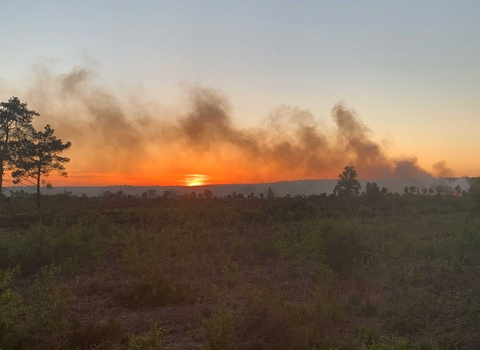Why do we need to manage and protect Surrey’s heathlands?
Lowland heath was mostly created by human activity beginning in the Bronze Age which kept areas free from trees. People cut plant materials for their own use and cleared land for farming and grazing animals. Although not a natural habitat, lowland heath is an increasingly rare and important one which supports a range of specialist species, some of which cannot live anywhere else.
In recent decades, grazing of cattle has declined along with the exercise of other traditional commoners’ rights such as the collection of firewood, and this has led to increased scrub growth. Housing developments and roads have also encroached onto former heathland areas.




